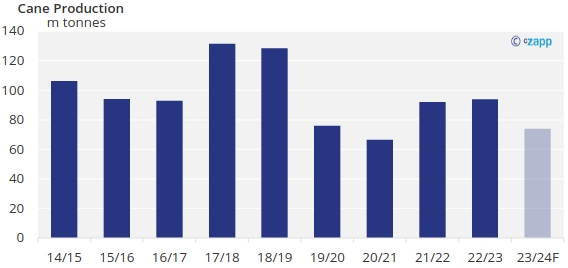Insight Focus
- Thai mills have not started hedging for 2023/24 season.
- At this point mills have usually started hedging for the upcoming season.
- But the way Thai sugar is hedged is changing.
Why haven’t mills started hedging sugar for the upcoming season?
So far mills in Thailand are close to finishing their hedging for the 2022/23 season and have not begun pricing volumes for the next season.
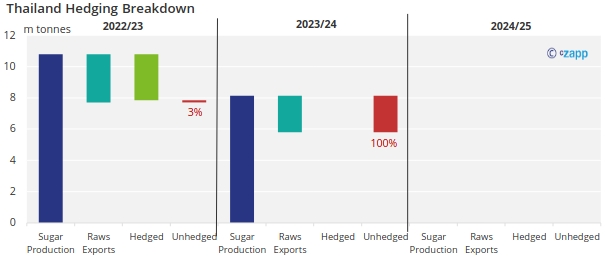
This is unusual because at this point, pricing for the next season should have already begun. Pricing for the next season usually starts when the current season is 75-80% priced.
At this point last year, Thai mills were 45% hedged for 2022/23 season. For that season, we saw pricing pick up twice due to higher No.11 prices. The first time in March and then flatten out in June and the second time in October and then flattened out.
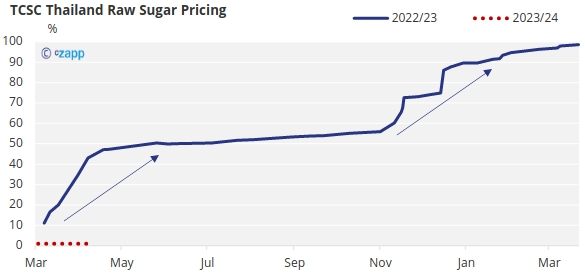
At current prices, we would expect that mills would begin pricing for 2024 futures contracts. However, after looking into the way the sugar hedging system works in Thailand it is not surprising that mills have not begun their hedging.
Usually, mills begin pricing after the B Quota Tender has been assigned, which is the export quota for raw sugar contracts sold on behalf of the Thailand Cane and Sugar Corporation or TCSC. The start of this quota was delayed because of the upcoming elections and changes in the TCSC pricing system. But now that there is more clarity, and the first B Quota Tender has been assigned we expect pricing to begin within the next two months.
What is our production outlook for next season?
For the upcoming 2023/24 season, we are expecting sugar production to decrease compared to the 2022/23 season. We are expecting Thailand to produce 8.2 million tonnes of sugar.
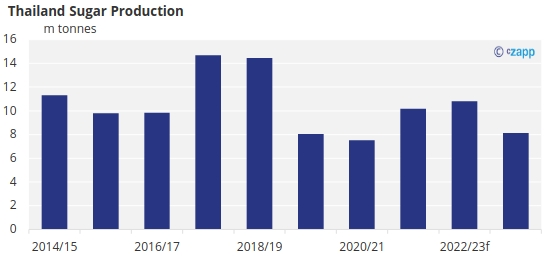
This is because of increasing cassava prices, which provide higher returns for small farmers. Small farmers decide what to plant depending on which crop gives them higher returns. Since, cassava returns are higher, small farmers will lean towards planting cassava. In Thailand small farmers account for 70% of the cane that is crushed at mills which means that if they plant less cane then this will directly impact sugar production for the upcoming season.
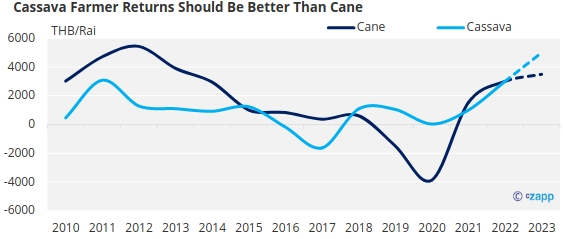
As a result, cane acreage will be lost to cassava leaving less cane available for sugar production. Therefore, reducing sugar production.
